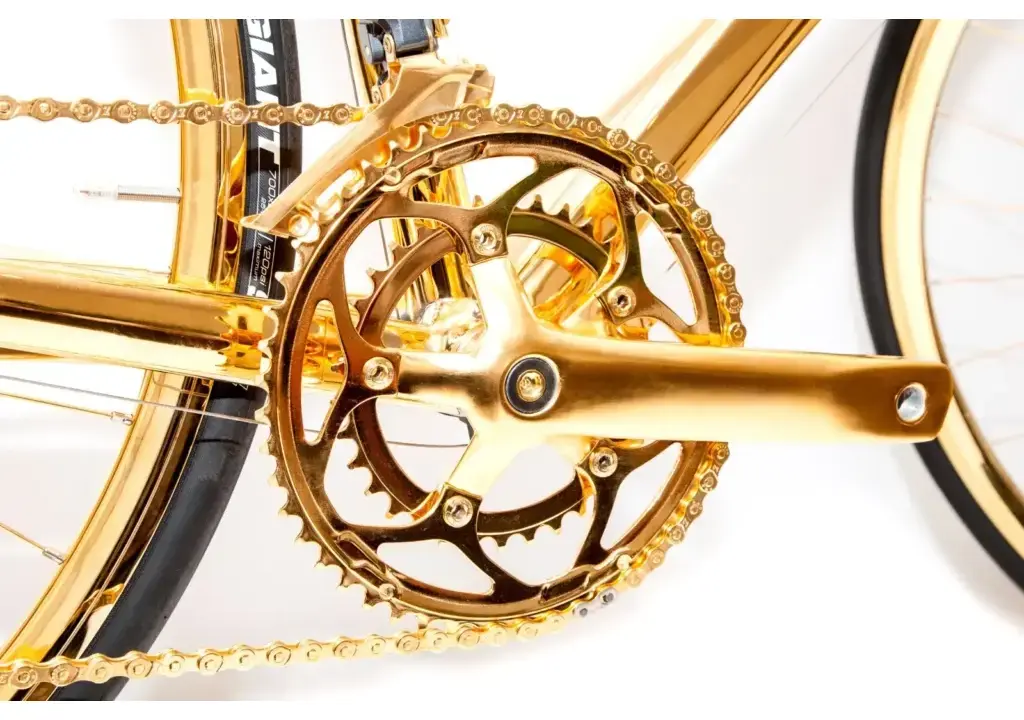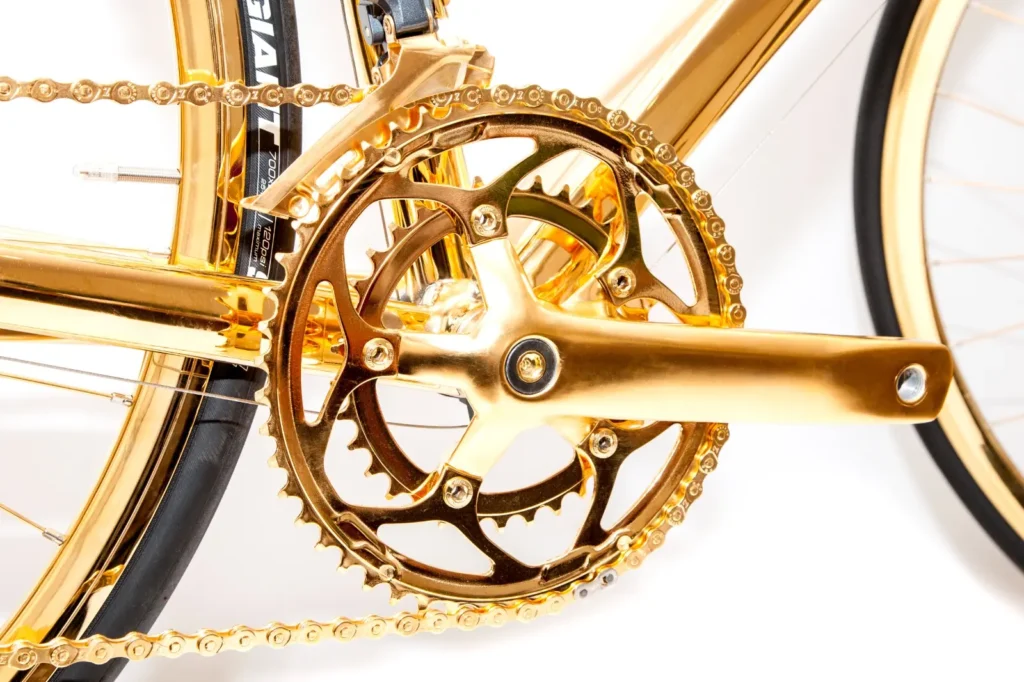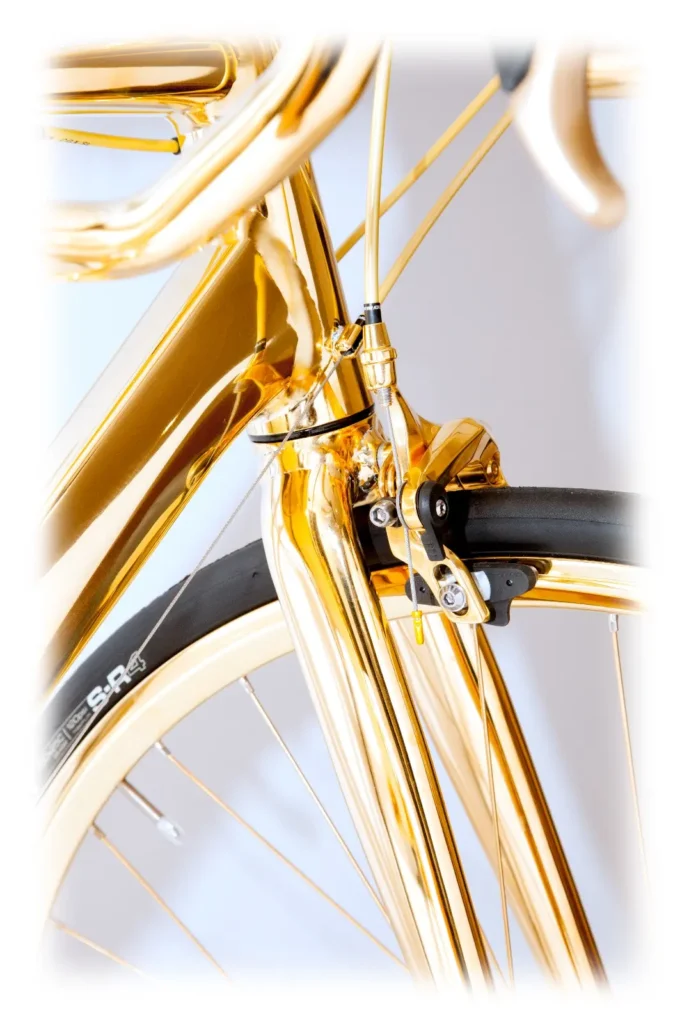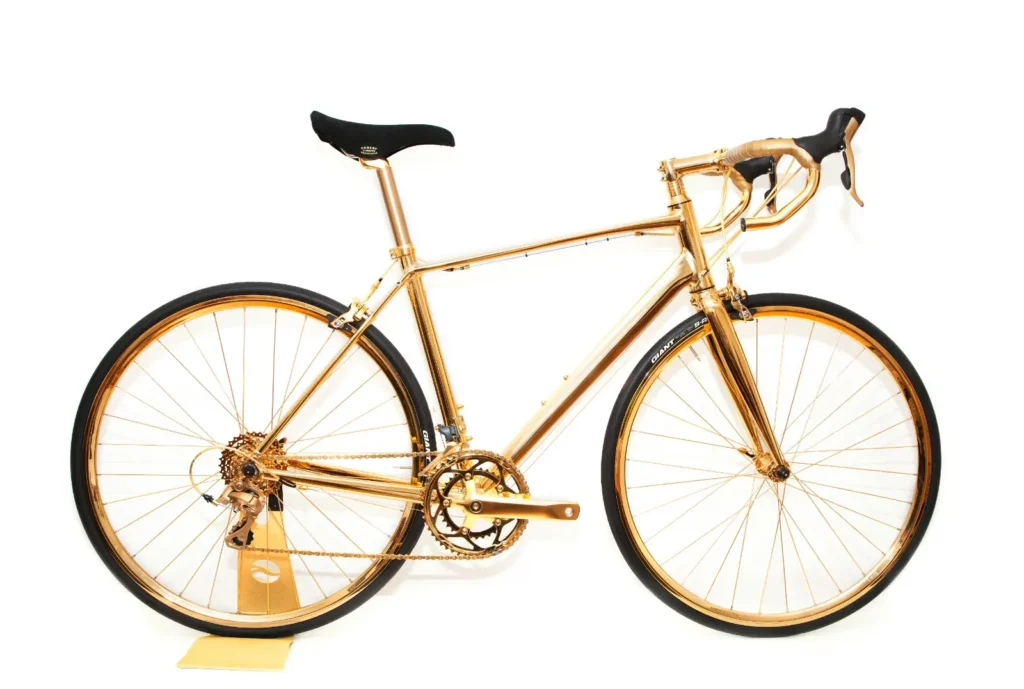Goldgenie’s Most Expensive Bike: The 24K Men’s Racing Bike

Imagine a road racing bicycle—light, aerodynamic, and built for speed—transformed into a sculpture of pure gold. That’s the stunning creation from London’s luxury house Goldgenie, unveiled in 2014 as the 24K Gold Men’s Racing Bike. Equal parts art, marketing brilliance, and master craftsmanship, it remains one of the most iconic luxury showpieces ever made.
The Origin Story
Based in the U.K., Goldgenie gained fame by gilding iPhones, watches, and other gadgets for celebrities. In late 2014, the company unveiled its golden bicycle, a bespoke one-off designed to showcase the team’s precision gold-plating work. Within weeks, global media outlets featured it, cementing its place as a spectacle of opulence.
What It Really Is
Beneath the gleaming exterior lies a standard aluminum road bike—reportedly a Giant model. Goldgenie’s artisans dismantled, cleaned, and electroplated every major component: the frame, forks, handlebars, rims, and even the chain. Each piece received a flawless layer of real 24-carat gold. To ensure the bike remained rideable, essentials like tires, brake pads, and bearings stayed in their original form. The result looked less like a racer and more like a museum piece.
Real Gold, Real Craftsmanship
Unlike decorative paint or gold leaf, Most Expensive Bike uses electroplating, a complex process that fuses a fine layer of gold to metal. It demands careful preparation, precise masking, and meticulous polishing to achieve that mirror-like finish. The coating adds minimal weight yet delivers maximum shine and exclusivity.
The Price Story
Goldgenie listed the Most Expensive Bike at £250,000, equivalent to about $327,000 in 2015. Exchange rate differences and optional upgrades—like diamond detailing or premium saddles—pushed quoted prices close to $390,000 in luxury magazines. Despite these variations, the official price tag remained £250,000 in the U.K.







Features and Custom Options
Buyers could customize nearly every element. Options included diamond inlays, limited-edition suede saddles, bespoke leather grips, and other handcrafted finishes. While the bike was functional, few owners would dare to pedal something this valuable; it was designed to be admired, not raced.
How the World Reacted
Reactions mixed fascination with disbelief. Cycling journalists praised the workmanship but poked fun at the donor bike’s modest origins—rumored to retail for around $1,000. Lifestyle outlets framed it as a status symbol, calling it the ultimate example of luxury excess. Critics argued that the gold added glamour, not performance, yet agreed that Goldgenie had struck marketing gold.
Was It the World’s Most Expensive Bike?
Goldgenie’s marketing described it as one of the World’s Most Expensive Racing Bikes, and that claim was accurate at launch. Since then, a few artist-made and gem-encrusted bicycles have fetched higher prices. Even so, the 24K Men’s Racing Bike remains one of the defining symbols of ultra-luxury cycling.
Why It Mattered
The project accomplished several goals. It displayed Goldgenie’s technical mastery, strengthened the brand’s identity as a luxury innovator, and generated global publicity. Beyond the marketing triumph, it also showed how everyday objects can cross into the realm of collectible art. In the cycling world, it became a fascinating reminder that extravagance sometimes pedals faster than practicality.
Final Take
The 24K Men’s Racing Bike isn’t a racer—it’s a statement. Light, functional, yet crafted to dazzle, it turns motion into art and metal into story. Whether viewed as a masterpiece or a marketing stunt, it achieved exactly what Goldgenie intended: getting the world to stop, stare, and talk about gold on two wheels.

